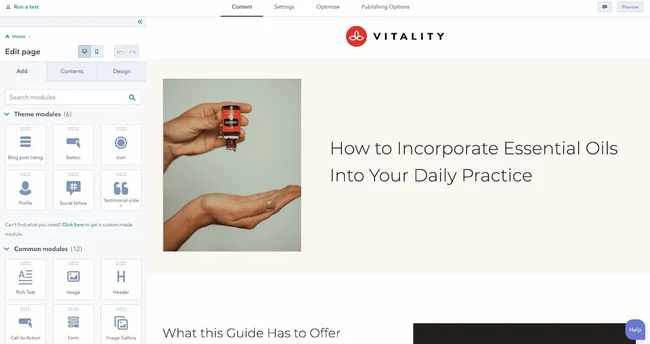Gone are the days when web design required extensive coding expertise. With the advent of easy drag-and-drop interfaces, designing a visually stunning and functional website has become accessible to everyone, regardless of technical background.
In this article, we’ll explore the transformative impact of drag-and-drop interfaces and how they empower users to create impressive websites effortlessly.
Breaking Down Technical Barriers:
Traditional web design often involved a steep learning curve, with intricate coding languages and design principles.
Drag-and-drop interfaces eliminate these barriers, allowing users to design websites by simply dragging elements onto a canvas and dropping them into place.
This user-friendly approach democratizes web design, putting the creative power in the hands of individuals without coding expertise.
Intuitive Design Process:
The essence of a drag-and-drop interface lies in its intuitiveness. Users can select and manipulate website elements easily, rearranging layouts, adding content blocks, and adjusting styles with a few simple clicks.
This intuitive design process fosters creativity and encourages experimentation, as changes are instantly visible.
Time and Resource Efficiency:
One of the major advantages of a drag-and-drop interface is the significant time and resource savings.
Without the need for coding, designers can rapidly prototype, iterate, and implement changes, reducing the development timeline and associated costs.
This efficiency is particularly beneficial for small businesses, startups, and individuals with limited budgets.
Responsive Design Made Simple:
Creating a responsive design, optimized for various devices, can be complex. Drag-and-drop interfaces simplify this process by allowing users to preview and adjust layouts for different screen sizes effortlessly.
This ensures a seamless user experience across desktops, tablets, and mobile devices.
Wide Range of Elements and Widgets:
Drag-and-drop interfaces typically come equipped with a rich library of pre-designed elements and widgets.
Users can easily incorporate features like image galleries, contact forms, sliders, and more without the need for custom coding.
This extensive library streamlines the design process and enriches the website’s functionality.
Real-Time Editing and Preview:
Witnessing changes in real-time is a game-changer for web designers. Drag-and-drop interfaces provide live editing and preview options, allowing users to see the impact of their changes instantly.
This immediate feedback accelerates the design process and ensures that the final result meets expectations.
User Empowerment:
The rise of easy drag-and-drop interfaces empowers individuals and small businesses to take control of their online presence.
No longer dependent on external developers for every website update, users can make changes independently, fostering a sense of ownership and creativity.
SEO-Friendly Outputs:
Concerns about the impact of drag-and-drop designs on search engine optimization (SEO) are addressed by modern platforms.
Many drag-and-drop website builders generate clean, SEO-friendly code, ensuring that the website performs well in search engine rankings.
Scalability and Flexibility:
Drag-and-drop interfaces are scalable and adaptable to various project sizes.
Whether you’re creating a personal blog or a comprehensive e-commerce site, these interfaces offer the flexibility to meet diverse needs.
User Support and Community:
Most drag-and-drop platforms provide extensive user support, tutorials, and a community forum where users can exchange tips and tricks.
This ecosystem facilitates ongoing learning and collaboration, ensuring that users can make the most of the platform’s capabilities.
Conclusion
Easy drag-and-drop interfaces have transformed web design, making it accessible, efficient, and enjoyable for a broad audience.
As these tools continue to evolve, they empower individuals and businesses to craft visually stunning and highly functional websites without the need for extensive technical expertise.
The future of web design is undoubtedly user-driven, with drag-and-drop interfaces leading the way.

